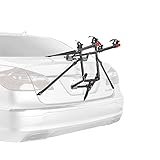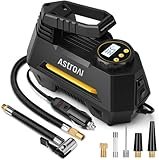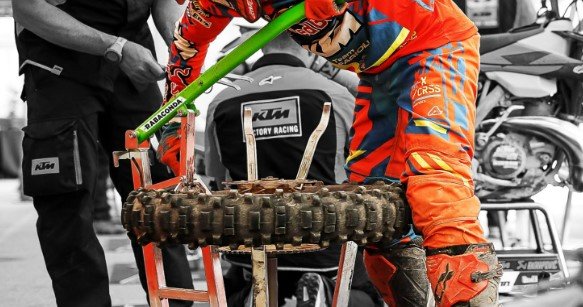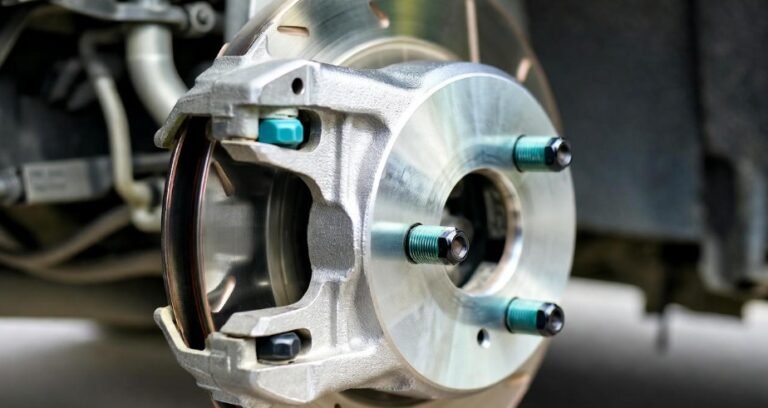Ranger Cycle Disc Brake Price

The Ranger cycle disc brake price varies, generally ranging from $50 to $300 per wheel for a full system replacement, depending on brand, type, and quality. DIY installation can save on labor costs.
In This Article
- 1 Key Takeaways
- 2 Understanding Ranger Cycle Disc Brake Components
- 3 Factors Influencing Ranger Cycle Disc Brake Price
- 4 Average Ranger Cycle Disc Brake Price Ranges
- 5 DIY vs. Professional Installation: The Cost Impact
- 6 Budget-Friendly Ranger Cycle Disc Brake Options
- 7 Ranger Cycle Disc Brake Price vs. Performance Table
- 8 Maintaining Your Ranger Cycle Disc Brakes
- 9 When to Upgrade Your Ranger Cycle Disc Brakes
- 10 Frequently Asked Questions (FAQ) About Ranger Cycle Disc Brake Price
- 10.1 Q1: What is the cheapest Ranger cycle disc brake price I can expect to pay?
- 10.2 Q2: Are hydraulic disc brakes worth the extra Ranger cycle disc brake price?
- 10.3 Q3: How much does it cost to have Ranger cycle disc brakes installed professionally?
- 10.4 Q4: Can I convert my existing bike to Ranger cycle disc brakes if it doesn’t have them?
- 10.5 Q5: How often do Ranger cycle disc brakes need maintenance?
- 10.6 Q6: What are the best budget hydraulic disc brake brands for Ranger cycles?
- 11 Conclusion
Key Takeaways
- Understand typical Ranger cycle disc brake prices.
- Identify factors influencing cost.
- Learn about DIY vs. professional installation.
- Explore budget-friendly options.
- Discover ways to maintain your brakes.
Are you looking to upgrade or replace the disc brakes on your Ranger cycle? Understanding the Ranger cycle disc brake price can seem a bit complex with so many options available. Whether you ride a mountain bike, a road bike, or a hybrid fitted with disc brakes, knowing what to expect for replacements and installations is crucial for keeping your ride safe and performing at its best. We’ll break down the costs involved, from individual components to complete brake systems, and help you make an informed decision for your cycling adventures across the USA.
Understanding Ranger Cycle Disc Brake Components

Before diving into the Ranger cycle disc brake price, it’s helpful to know what makes up a disc brake system. This will give you a clearer picture of why prices can fluctuate. A typical hydraulic disc brake system for a bicycle includes several key parts:
- Brake Levers & Calipers: These are usually integrated or sold as a set. The lever is what you squeeze, and it activates the caliper, which houses the brake pads. The caliper clamps down on the rotor.
- Brake Rotors (Discs): These are the metal discs that attach to your wheel hubs. They come in various diameters (e.g., 160mm, 180mm, 203mm), and larger rotors generally offer more stopping power.
- Brake Pads: These are the friction material that presses against the rotor. They can be made of organic (resin) or metallic compounds, each with different performance characteristics and lifespans.
- Brake Hoses/Cables: These connect the levers to the calipers, carrying the hydraulic fluid (for hydraulic brakes) or cable tension (for mechanical brakes).
- Adapter Mounts: If your bike’s frame or fork isn’t designed for the specific size of your caliper or rotor, you’ll need adapters.
Each of these components can be purchased separately, but often, buying a complete set offers better value and ensures compatibility.
Factors Influencing Ranger Cycle Disc Brake Price
The overall Ranger cycle disc brake price is influenced by several key factors. Recognizing these will help you navigate the market and find the best options for your budget and needs.
1. Type of Disc Brake System
There are two main types of disc brakes for bicycles:
- Mechanical Disc Brakes: These are operated by a standard brake cable connected to your brake lever. They are generally less expensive and easier to maintain for DIY enthusiasts.
- Hydraulic Disc Brakes: These use hydraulic fluid to transfer force from the lever to the caliper. They offer superior stopping power, modulation (fine control over braking force), and require less hand effort. They also tend to be more expensive.
For hydraulic systems, the price difference can also come down to the quality of the fluid and seals, as well as the sophistication of the lever and caliper design.
2. Brand and Quality Tier
Like many automotive components, bicycle components come in various tiers from different manufacturers. Well-known brands like Shimano, SRAM, and Tektro offer a wide range of disc brake options. Higher-end lines from these brands, featuring lighter materials, advanced designs, and improved performance, will command higher prices. Entry-level or budget-friendly brands might offer lower Ranger cycle disc brake price points but may compromise on performance, durability, or feel.
3. Material and Technology
The materials used in brake levers, calipers, and rotors can significantly impact cost. For instance, calipers made from forged aluminum or even lighter magnesium alloys will be more expensive than those made from stamped steel or basic aluminum. Rotors can also vary; some feature lightweight designs or special coatings for heat dissipation or durability, contributing to a higher price.
4. Rotor Size
As mentioned, larger rotors provide more stopping power. However, they also require larger calipers and sometimes different mounting adapters. A larger rotor (e.g., 203mm compared to 160mm) will also add to the overall cost of the brake system or replacement parts.
5. New vs. Used Components
You can often find used disc brake components at a lower Ranger cycle disc brake price. However, it’s crucial to inspect used parts thoroughly for wear, damage, and proper functionality. New components come with warranties and the assurance of optimal performance from day one.
Average Ranger Cycle Disc Brake Price Ranges
Let’s break down the typical costs you might encounter when looking at the Ranger cycle disc brake price. These are estimates for a single wheel’s brake system (or replacement parts for one wheel) and can vary based on the factors mentioned above.
Mechanical Disc Brakes
Mechanical disc brakes are the most budget-friendly option. They are a great choice for commuters, general-purpose bikes, or those on a tight budget.
Components & Estimated Prices:
- Brake Lever (Single): $15 – $40
- Mechanical Disc Brake Caliper (Single): $20 – $60
- Brake Cable & Housing Set: $10 – $25
- Disc Rotor (160mm): $15 – $35
- Complete Mechanical Disc Brake Set (Levers, Cables, Calipers for Front & Rear): $80 – $200
So, for a single wheel replacement of a mechanical disc brake system, you might be looking at around $50 – $100 for the caliper, rotor, and associated cable setup.
Hydraulic Disc Brakes
Hydraulic disc brakes offer a significant upgrade in performance. The Ranger cycle disc brake price here reflects more sophisticated engineering, better materials, and improved hydraulic technology.
Components & Estimated Prices:
- Entry-Level Hydraulic Brake Set (Levers, Calipers, Hoses – Front & Rear): $100 – $250
- Mid-Range Hydraulic Brake Set (Levers, Calipers, Hoses – Front & Rear): $250 – $500
- High-End/Performance Hydraulic Brake Set (Levers, Calipers, Hoses – Front & Rear): $500+
- Disc Rotor (160mm): $20 – $60
- Hydraulic Brake Pads (Pair): $15 – $40
For a single wheel replacing the hydraulic caliper, rotor, and potentially a lever, you’re looking at a range of approximately $75 – $300+. A full hydraulic system replacement for both wheels could cost anywhere from $150 to over $1000, depending on the chosen level of performance.
DIY vs. Professional Installation: The Cost Impact
A significant part of the overall Ranger cycle disc brake price comes from labor if you choose professional installation. Performing the installation yourself can lead to substantial savings.
DIY Installation
Pros:
- Significant cost savings on labor fees.
- Increased understanding of your bicycle’s mechanics.
- Flexibility in when and how you perform the work.
Cons:
- Requires specific tools (e.g., Allen keys, torque wrench, brake bleeding kit for hydraulic brakes).
- Can be time-consuming, especially for beginners.
- Risk of improper installation, leading to poor performance or damage if not done correctly.
If you’re comfortable with basic bike maintenance, many resources are available online, including detailed YouTube tutorials and guides from reputable cycling websites like Park Tool or GCN Tech. For hydraulic brakes, bleeding the system is often the most complex step, requiring specific tools and fluid.
Professional Installation
Pros:
- Expert installation ensures proper function and safety.
- Warranty on labor, providing peace of mind.
- Saves you time and effort.
- Access to specialized tools and knowledge.
Cons:
- Higher overall cost due to labor charges.
- Requires scheduling an appointment at a bike shop.
Labor costs for installing a new disc brake system (including bleeding hydraulic brakes if necessary) can range from $50 to $150 per wheel or more at a local bike shop in the USA. This often makes the total Ranger cycle disc brake price double what you might pay for parts alone if you do it yourself.
Budget-Friendly Ranger Cycle Disc Brake Options
If the Ranger cycle disc brake price seems a bit steep, there are ways to get reliable disc brakes without breaking the bank. Here’s how:
- Consider Mechanical Disc Brakes: For many riders, especially those who don’t tackle extreme terrain or require the absolute finest modulation, mechanical disc brakes offer excellent stopping power at a significantly lower cost. Brands like Tektro and Promax offer reliable mechanical options.
- Look for Entry-Level Hydraulic Brakes: Brands like Shimano (e.g., MT200 series) and SRAM (e.g., Level series) offer very capable entry-level hydraulic disc brakes that provide a substantial performance upgrade over mechanical brakes and rim brakes, often at a reasonable price point for a complete set.
- Buy Kits or Packages: Many manufacturers sell complete brake sets for both front and rear wheels. These are often priced more competitively than buying individual components. You can frequently find these kits on sale from online retailers.
- Shop Online Sales and Clearance: Keep an eye on major online cycling retailers in the USA (e.g., Jenson USA, Competitive Cyclist, Chain Reaction Cycles, Wiggle) for sales, end-of-season clearances, or special offers on disc brake systems and components.
- Consider Reputable Aftermarket Brands: Brands like Clarks, Zoom, and some house brands from large retailers can offer disc brake systems at a lower Ranger cycle disc brake price. It’s wise to read reviews to ensure they meet your performance and durability expectations.
Ranger Cycle Disc Brake Price vs. Performance Table
To help visualize the trade-offs, consider this table comparing different types of disc brake systems and their general price points. Remember that specific models within each category can vary.
| Brake Type | Typical Price Range (per wheel) | Stopping Power | Modulation/Control | Maintenance Complexity | Best For |
|---|---|---|---|---|---|
| Mechanical Disc Brake | $50 – $100 (parts) | Good | Fair | Low | Budget Commuting, Casual Riding, Wet Conditions |
| Entry-Level Hydraulic Disc Brake | $75 – $150 (parts) | Very Good | Good | Medium | All-around Riding, Light Trail Use |
| Mid-Range Hydraulic Disc Brake | $150 – $300 (parts) | Excellent | Very Good | Medium | Trail Riding, Cross-Country, All-Mountain |
| High-End Hydraulic Disc Brake | $300+ (parts) | Superior | Excellent | Medium to High | Downhill, Enduro, Performance Racing |
This table illustrates that while the initial Ranger cycle disc brake price for high-end systems is significantly higher, the performance gains in stopping power and control are substantial.
Maintaining Your Ranger Cycle Disc Brakes
To get the most out of your investment, proper maintenance is key. Regular care can extend the life of your components and ensure consistent performance, potentially saving you money on premature replacements.
Regular Checks:
- Inspect Pads: Periodically check your brake pads for wear. Most pads have wear indicators. Replace them when they are thin (typically less than 1mm of pad material remaining).
- Clean Rotors: Keep your rotors clean. Avoid touching the rotor surface with your bare hands, as skin oils can contaminate them and reduce braking effectiveness. Clean with isopropyl alcohol and a clean cloth if necessary.
- Check Rotor Condition: Ensure rotors are not significantly bent or grooved. Minor bends can sometimes be straightened, but heavily damaged rotors need replacement.
- Listen for Noises: Squealing or grinding sounds can indicate worn pads, contamination, or issues with the rotor or caliper alignment.
Hydraulic Brake Specifics:
- Fluid Levels: While hydraulic systems are generally sealed, occasional checks of fluid levels might be necessary, especially if you notice a spongy lever feel.
- Brake Bleeding: Over time (typically every 1-2 years, or when the lever feels spongy), hydraulic brakes need to be bled to remove air bubbles from the system and replace old fluid. This is a crucial maintenance task that significantly impacts brake performance and longevity. Many shops offer this service, or you can do it yourself with a specific hydraulic brake bleeding kit.
Proper maintenance can significantly prolong the life of your disc brake system, making the initial Ranger cycle disc brake price a more manageable long-term cost.
When to Upgrade Your Ranger Cycle Disc Brakes
While maintaining your current brakes is important, there are times when upgrading is the best option:
- Worn-out Components: If your calipers are leaking, pistons are sticking, or rotors are heavily worn, replacement might be more cost-effective than trying to repair.
- Insufficient Stopping Power: If you find yourself wanting more confidence and control on descents or in demanding conditions, upgrading to a more powerful hydraulic system can make a huge difference.
- Weight Savings: For performance-oriented riders, upgrading to lighter rotors, calipers, and levers can shave off valuable grams from your bike.
- New Bike Purchase/Build: When buying a new bike or building one from scratch, you have the opportunity to choose the disc brake system that best suits your intended use right from the start.
Considering the overall Ranger cycle disc brake price for an upgrade means looking at the total package – how much improvement you’ll get for the money spent.
Frequently Asked Questions (FAQ) About Ranger Cycle Disc Brake Price
Q1: What is the cheapest Ranger cycle disc brake price I can expect to pay?
You can find mechanical disc brake sets for around $80 – $130 for both front and rear wheels if you shop smart for budget-friendly brands and look for sales. However, basic individual mechanical calipers can be found for as low as $20-$30 each.
Q2: Are hydraulic disc brakes worth the extra Ranger cycle disc brake price?
For most riders, yes. Hydraulic disc brakes offer significantly better stopping power, modulation, and require less hand effort, especially on long descents. The improved control and confidence they provide often make the higher Ranger cycle disc brake price worthwhile.
Q3: How much does it cost to have Ranger cycle disc brakes installed professionally?
Professional installation typically costs between $50 – $150 per wheel for labor, which includes bleeding hydraulic systems. This adds to the parts cost, so a full hydraulic system installation could range from $150 to $300+ in labor on top of the component prices.
Q4: Can I convert my existing bike to Ranger cycle disc brakes if it doesn’t have them?
It depends on your bike’s frame and fork. Disc brakes require specific mounting points (IS, Post Mount, or Flat Mount). If your frame and fork lack these mounts, you generally cannot convert to disc brakes. If they do have the mounts, you can often convert, but you might need adapter brackets, and the overall Ranger cycle disc brake price for the conversion could be substantial.
Q5: How often do Ranger cycle disc brakes need maintenance?
Regular checks of pads and rotors should be done frequently, perhaps every few rides. Hydraulic brake fluid should ideally be replaced and the system bled every 1-2 years, or sooner if you notice a spongy lever feel. Pads need replacing when worn, which can be anywhere from a few months to over a year depending on riding conditions and use.
Q6: What are the best budget hydraulic disc brake brands for Ranger cycles?
For budget-friendly hydraulic options, look at Shimano’s MT200 or MT400 series, SRAM’s Level series, or offerings from Tektro. These provide a great balance of performance and value, making the Ranger cycle disc brake price more accessible.
Conclusion
Navigating the Ranger cycle disc brake price landscape reveals a spectrum of options to suit every rider and budget. From affordable mechanical systems perfect for everyday commuting to high-performance hydraulic setups designed for demanding trails, there’s a brake solution for you. Understanding the components, the factors that influence cost, and the difference between DIY and professional installation will empower you to make the best choice. By considering your riding style, budget, and the long-term benefits of reliable stopping power, you can confidently select and maintain disc brakes that enhance your safety and enjoyment on every ride.






